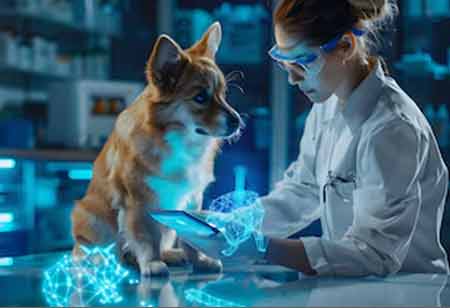Thank you for Subscribing to Healthcare Business Review Weekly Brief
Advancing Pet Wellness: The Role of Innovative Veterinary Technologies

Be first to read the latest tech news, Industry Leader's Insights, and CIO interviews of medium and large enterprises exclusively from Healthcare Business Review
Thank you for Subscribing to Healthcare Business Review Weekly Brief

By
Healthcare Business Review | Friday, May 09, 2025
Stay ahead of the industry with exclusive feature stories on the top companies, expert insights and the latest news delivered straight to your inbox. Subscribe today.
The latest veterinary medicine innovations are revolutionizing pet care by providing precise diagnostics, personalized treatments, and improved health condition management.
FREMONT, CA: The field of veterinary medicine is experiencing significant changes due to advancements in diagnostic imaging technologies. Traditional techniques like X-rays and ultrasounds are essential in diagnosing pet conditions. However, recent innovations like computed tomography (CT) and magnetic resonance imaging (MRI) offer even greater detail and precision. CT scans provide clear images of bone structures and soft tissues, while MRIs offer valuable insights into the brain and spinal cord, aiding in diagnosing complex neurological conditions. These advancements enable veterinarians to visualize internal structures with exceptional clarity, leading to more precise diagnoses and better-informed treatment plans.
Identifying genetic predispositions to particular diseases and disorders through genetic testing and telemedicine transforms the pet care field. Through proactive management and individualized care, these tests can assist in identifying health hazards before the onset of symptoms. To enable early intervention and customized treatment regimens, genetic tests, for instance, can forecast the probability of inherited illnesses such as hip dysplasia or specific forms of cancer. Telemedicine systems in remote or underdeveloped areas allow pet owners to receive remote consultations, follow-up care, and assistance. The convenience and efficiency of veterinary services are increased by this technology, which makes care more prompt and adaptable. Improvements in care quality and general pet health have resulted from these improvements.



